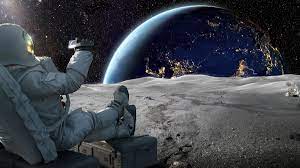Cinema has always embraced new ways of seeing the world, recognising both the technical innovation and commercial potential of each fresh development. But, more than a century since the moving image first beguiled audiences, every change has been greeted with a combination of delight and intransigence.
The arrival of synchronised sound with The Jazz Singer in 1928 was a great leap forward by any measure, but some iconic filmmakers regarded it as a retrograde step for the artistry of the medium. Similarly, colour film fulfils a logical kind of destiny, though some have resisted. The late Fred Zinnemann (High Noon) explained to me, many years ago, that it was just another stylistic choice, another tool in the box to be used as appropriate. “I believe that you should use the medium in the way you feel you can express yourself best at any given time.”
I found Avatar much more involving and enjoyable in 2D than in 3D – Dougal Dixon, Rex Cinema, Wareham, Dorset (UK)
He was not talking about 3D movies then, but he might as well have been, for this is the trend that is currently exercising critics—“3D, schmee-D,” opines Radio Five Live’s reviewer Mark Kermode—and driving an industry that is always looking for new ways to draw audiences to cinemas. It’s a subject that director James Cameron is well qualified to talk about, having developed the technology to bring Avatar to the screen last year, who then saw it smash all previous box-office records.
‘It has to be used in balance, with all of the other techniques of film as well,’ Cameron said at the time of Avatar’s release. “If you were to see Avatar in 2D it would still be beautifully acted, beautifully designed and beautifully photographed; it’s not like you’re suddenly left with 50 per cent of the experience. But if you do want to see it with that extra turbocharger of an experience and want to pay a little extra to do so, 3D is the way to go.”
There is a supposed added value to a 3D film, with the perceived enhanced viewing experience and special glasses that make the new generation of films far less headache-inducing than earlier iterations. For 3D might be the buzz word of the industry currently, but it dates back to the early 1920s, building on principles practiced in early photography. The difference now is that cinemas have invested heavily with the UK’s biggest chain, the Odeon, leading the way.
“In order to convert an auditorium into a 3D-capable screen, the following changes need to be made: installation of a DCI-compatible digital projector, a RealD Cinema System which mounts to the front of the projector and a silver screen,” a spokesperson for the chain explains. “Odeon and UCI now have more than 300 3D screens across the UK and Ireland, which equates to approximately 40 per cent of total screens.”
When television ownership became more widespread in the 1950s, cinema feared for its future, and responded by introducing bigger—though not always better—films, wraparound screens, enhanced sound and other means of establishing itself as a thrilling alternative to staying home and watching the telly. Now home cinema systems abound, television screens are bigger than ever and HD is fast becoming the standard, with the growth of 3D television the next logical step. So the response of filmmakers, distributors and exhibitors fits into a previously established pattern, and the response is an aggressive promotion of cinema’s unique appeal.
“3D has been warmly welcomed by consumers,” Odeon’s spokesperson adds, “and there are more and more films being made in the format. It has been embraced by key filmmakers like James Cameron, Steven Spielberg, Peter Jackson and Robert Zemeckis. As such it has become an increasingly important part of the cinema exhibition business and Odeon have been at the forefront of this innovation.”
This innovation is made easier by the arrival of more and more digital screens, with cost savings in removing the need to produce expensive celluloid prints and then paying to have them physically delivered around the country. There is also a positive benefit in the fight against film piracy, with a film projected in 3D being virtually impossible to surreptitiously pirate from the safety of the stalls.
But not everyone is so evangelical about 3D. In contrast to the vast resources available for chains like Odeon to upgrade their technology on a regular basis, independents that have carefully nurtured a local audience offer an alternative view. Dougal Dixon, operations manager of the Rex Cinema in Wareham, Dorset, is a little more cautious about cinema’s future being exclusively in three dimensions.
“The lack of 3D facilities at the Rex doesn’t seem to have affected ticket sales,” he says. “Indeed, we have quite lost sight of the fact that many of our titles were originally released in 3D. It was only when Buzz Lightyear held out his hand to Woody—or was it the other way round?—at the climax of Toy Story 3, and the hand came towards the audience, that we remembered that it was made with a different projection system in mind.
“From a personal point of view I found Avatar much more involving and enjoyable in 2D than in 3D. When I saw it first, in 3D, I found the presentation a distracting gimmick. We were looking at giddying vistas of floating mountains and deep vertical forests rather than worrying about what people were doing there. Only when I got round to seeing it in 2D did I become more interested in the storyline. Perhaps that is how Hollywood perceives its audience: more interested in spectacle than in plot.”
This point may be underlined by news that the Star Wars films, beginning with Episode 1: The Phantom Menace, are to be converted (retrofitted, as the jargon has it) to 3D. Some people may be slavering at the very thought of this, though the experience of watching Episode IV: A New Hope, the 1977 film that kicked the saga off, can never be better than the crackly, analogue print on a regional cinema screen that I saw as a wide-eyed 11-year-old. And that is surely the point; the technology is great but it’s the content that really matters.
Director Joe Dante, who made the very fine 3D film The Hole, believes that sacrificing the quality of the content for the supposed commercial benefits of the current cinematic zeitgeist would be foolish in the extreme.
“That would be cutting the throat of a process which I think has merit and has improved to the point where it’s the easiest to shoot, the easiest to project and the easiest to watch that it’s ever been. And yet, even though the audiences prove that they’re interested in seeing 3D, some people insist on giving them substandard product and charging them extra for it. I think that’s just madness.”
The headache, for some, continues. •












